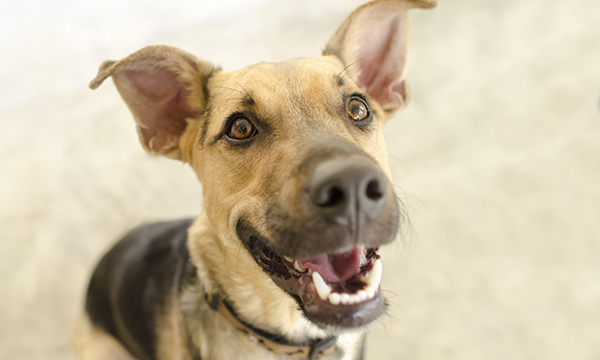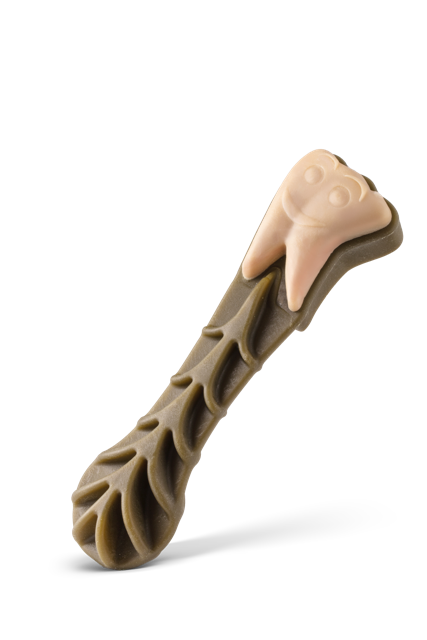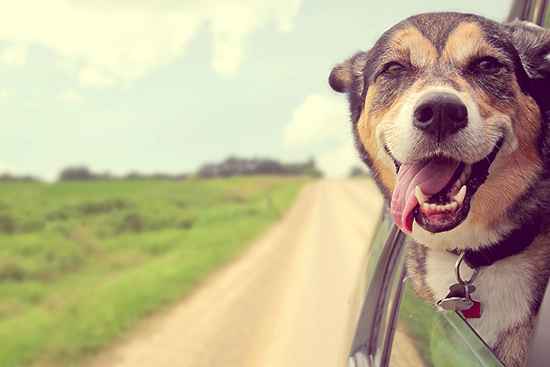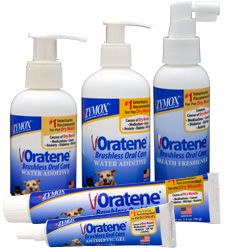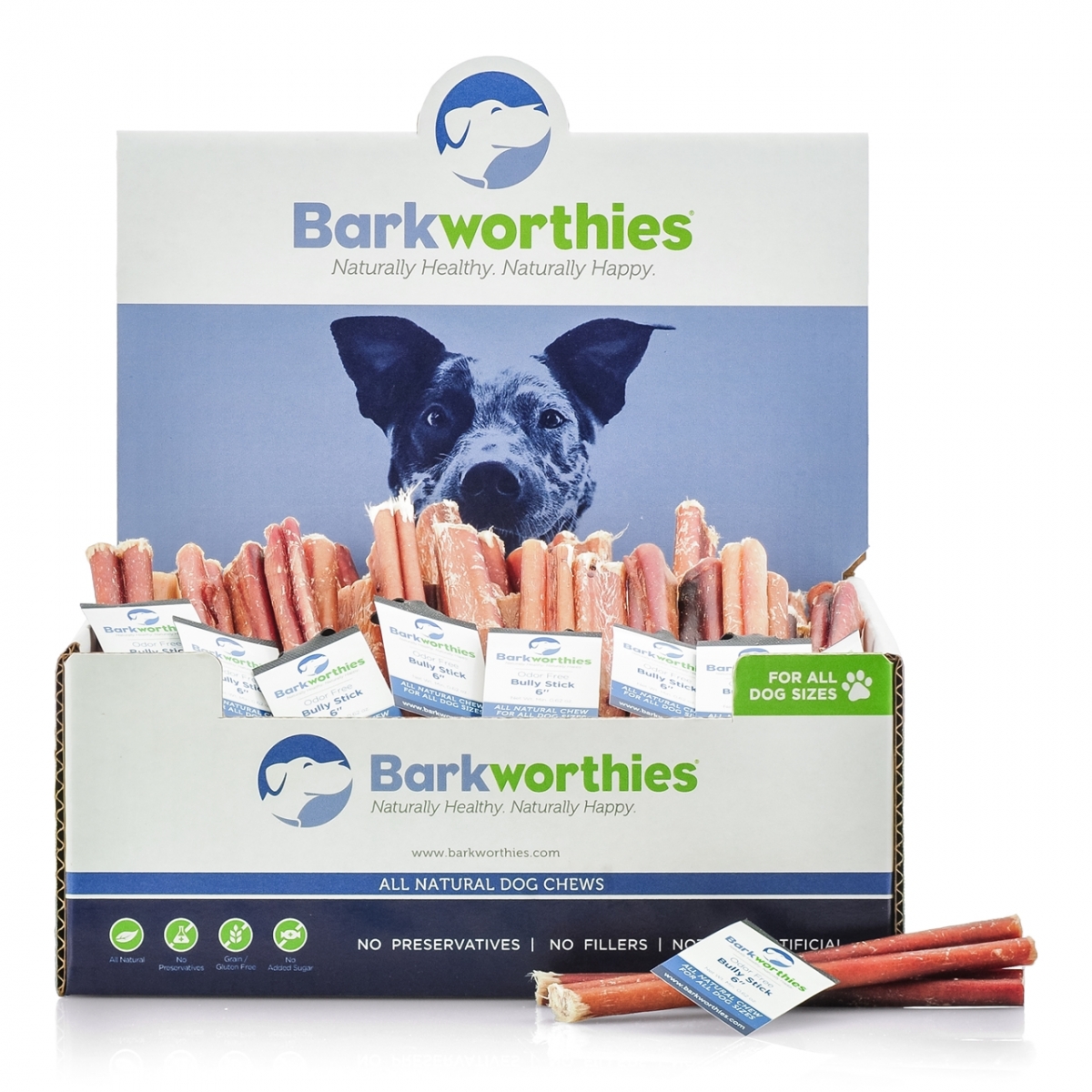- Dog CareDog LifeCommunity
- Photo Contest
Photo Contest- Giveaways
Your Canine’s Canines—Everything You Ever Wanted to Know About Your Dog’s Teeth
Brought to you by WHIMZEES vet Dr. Danielle Bernal
In 2017, the top diagnosis made by US Veterinarians for dogs was dental disease, a problem so widespread it now affects 4 out of 5 dogs over 3 years of age. Contributing to this epidemic is the lack of daily dental care for dogs, the increase of small breeds and older dogs that are more predisposed to dental issues, and the assumption that visible signs of dental disease, like bad breath, are simply normal doggy traits.
Dog owners used to believe that simply giving a dog a bone to chew on every now and then was all the dental care dogs needed. Today, we know so much more about the importance of oral care for dogs and understand that a dental health program that includes both professional veterinary care as well as at home daily dental care is crucial to a healthy mouth and a happy dog.
There are a lot of factors to consider when deciding upon oral care for your dog. Here’s the latest scientific evidence and everything you ever wanted to know about your dog’s teeth, including those questions which you may have been too afraid to ask before:
ARE PEOPLE DENTAL ISSUES THE SAME AS DOG DENTAL ISSUES?
Tooth decay is not common in dogs: Dogs do not typically develop cavities from tooth decay like people because of the shape of their teeth, the pH of their saliva, the type of bacteria in their mouth and the types of food they consume.
Periodontal disease is very common – 4 out of 5 dogs! Dogs are very susceptible to periodontal disease and tooth loss. Periodontal disease affects not only the gums, but also all the supporting structures of the tooth. It is caused by a buildup of plaque and tartar on the surface of the teeth and under the gums. Plaque is the soft, clear or cream-colored biofilm deposit that naturally forms on pets’ teeth. Plaque is made up of large amounts of bacteria with additional particles of food, protein and cellular debris. If plaque is not removed by brushing or active chewing, minerals, primarily calcium, in the dog’s saliva stick to the plaque biofilm and it develops into tartar. Tartar is the hard yellow/brown material that resists removal and is found below and above the gum. As plaque and tartar levels increase on the teeth, bacteria accumulate around these deposits causing periodontal disease to intensify and cause associated periodontal inflammation visible most frequently at the gum line.
HOW DO I KNOW IF MY DOG HAS DENTAL DISEASE?
That doggy breath is your biggest clue! Periodontal disease in dogs causes inflammation of the gums, infections, mouth pain, and loss of teeth. If a dog is suffering from dental disease, owners will notice that their dog has bad breath, discoloured teeth, red and inflamed gums and may show a reluctance to eat or pain while eating.
Flip your dog’s lip and have a look at their teeth. What can you see? Do your dog’s teeth look pearly white or slightly discolored with some yellowing visible? Or do you see a case of significant brown deposits sitting on the molars combined with red and inflamed gums?
If you see any brown deposits or red gums, contact your local veterinarian. Your vet is the expert when it comes to dental health so make the first step to improving your dog’s dental health. A quick phone call to book your dog for an annual health and dental check could do just the trick!
WHAT CAN YOU DO TO HELP YOUR DOG?
Regular checkups with your vet are essential to a healthy dental routine but like people, dogs need to have their teeth cleaned at home every day. Plaque accumulates every minute of your dog’s day and within just 48 hours this plaque starts to harden into tartar, which is much tougher to remove. When the surface of a dog’s teeth is mechanically abraded (scrubbed!) with a toothbrush or dental chew, this helps remove plaque buildup and reduces the overall progression of dental disease.
Have you brushed your dog’s teeth today? After a professional veterinary cleaning of your dog’s teeth, brushing your dog’s teeth isthe next best option to promote your dog’s dental hygiene. However, we understand brushing a dog’s teeth is often not easy or enjoyable, for you or your pup! It’s estimated that only 2% of dog owners brush their dog’s teeth. For the 98% of us that don’t brush our dog’s teeth, the easiest way to help remove plaque and tartar from your dog’s teeth is to give them a scientifically proven dental chew like WHIMZEES. Based on a study at an independent kennel, WHIMZEES are 80% more effective at reducing plaque than leading competitors and have a 3x longer chew time to help clean those hard to reach places (January 2017). Available in sizes XS to XL, and in unique shapes such as Alligators, Hedgehogs, and the latest evolution of the toothbrush, Brushzees, there’s sure to be a WHIMZEES to keep your dog happy and your dog’s mouth healthy.
Bad Breath in Pets Could Be a Sign of Poor Health
If you’ve ever experienced dry mouth, you know how uncomfortable it can be. Unfortunately, your pet can get dry mouth too, and it can lead to more serious issues down the line and can also be a sign of more serious current health issues.
Dry mouth is a condition where saliva loses its protective benefits and leads to an overgrowth of odor-causing bacteria and plaque accumulation, as well as increases the risk of periodontal disease.
While such diseases as diabetes can contribute to dry mouth in pets, the most common cause is medication. What’s more, it is believed that medications increase the risk of developing complications due to dry mouth by 40 percent. This side effect is far-reaching. Medications for allergies, anxiety, urinary incontinence, osteo-arthritis pain, heart conditions, high blood pressure and more can all contribute to dry mouth.
While most pet parents are not aware their furry friends have dry mouth because they may still drool even with the condition, watching out for bad breath can help, as it is often a red flag that something is wrong.
Experts say that you don’t need to wait until this becomes an issue to protect your pet’s health. “Prevention is always the best medicine,” says Pamela K. Bosco, president of Pet King Brands.
Bosco recommends Oratene Brushless Oral Care for pets, an easy-to-use oral care product line that doesn’t require brushing. Whether it’s the water additive, breath freshening spray or brushless toothpaste gel, the enzymes in its formula work to replenish what is missing in order to help restore healthy oral flora, as well as destroy odor causing bacteria and remove plaque biofilm. The products can help prevent complications due to dry mouth, and will benefit any age dog or cat, especially those on medications, aging pets, or those pet parents averse to brushing.
Oral health is crucial to a pet’s overall health. Be sure to pay special attention to the state of affairs in your pet’s mouth by taking steps to prevent dry mouth, a condition that can lead to serious health issues when left untreated.
Barkworthies Odor-Free Bully Sticks
Barkworthies' Odor-Free Bully sticks are perfect for both owners and their furry pals — not only are they fantastic for your dog's dental hygiene, but they also help to prevent that smelly dog breath! This 100% digestible snack is all-natural, and will protect your dog's pearly whites while giving him a snack he will love you for. – EM
Naturally Keep Your Dog’s Teeth and Gums Health
Many people don't realize that the offensive breath coming from their dog isn't normal. In fact, it could be a sign that there are dental issues brewing. Maintaining the health of your dog's teeth and gums are important to his overall health, especially since infections of the mouth can spread to other systems and lead to more serious conditions.
There are plenty of natural ways to keep your pet's mouth healthy. The key, though, is to follow these steps every day, just as you brush your teeth daily to ensure your oral health.
The Right Diet
Nutrition is a key component to keeping your dog healthy, right down to the teeth and gums. Raw diets tend to work best because they mimic the natural tearing and pulling action that animals use in the wild in order to rip flesh away from bone, and this stimulates the gums and cleans the teeth.
Providing raw bones, no matter what type of food you feed, is also a great way to allow your dog to not only clean the teeth but get some natural calcium as well. Never cook bones because they'll become brittle and can cause serious injuries when ingested. Stick with chicken necks for small dogs, and give knucklebones and marrowbones to larger breeds of dogs.
Kibble won't keep your dog's teeth clean. The carbohydrates within the kibble will actually do more harm than good, and while many think that the abrasiveness of kibble will clean the mouth, this simply isn't true.
Brush Daily
Brushing is another key component to naturally maintaining your pet's oral health. Purchase a natural enzymatic toothpaste made specifically for dogs. These are great because the enzymes will work on breaking down plaque without the need for actual brushing action.
To make the process of getting your furry friend used to having his teeth brushed easier, start at a young age, go slow, and be patient. A little bit every day will go a long way, especially if you're gently using your finger or a species-appropriate toothbrush. You can even use a small piece of gauze or a washcloth, both of which have an abrasive texture, if your pet simply won't tolerate a toothbrush.
Natural Supplements
Natural supplements can be used to keep your pet's mouth healthy. For example, apply calendula (a homeopathic remedy) onto the gums to prevent gum disease. Vitamin C helps boost the immune system and fortify the ligaments and connective tissues of the gums that hold teeth in place. And CoQ10 is great for reducing inflammation and swelling of the gums.
Regular Check-Ups at the Vet
No matter how well you keep track of your dog's oral health at home, it's always recommended that you bring your pet to the vet to have a thorough examination of the mouth. Your vet can also provide cleanings to eliminate any plaque and tartar you were unable to remove and prevent.
Dogify Your Inbox
Sign up for the FREE Modern Dog Magazine newsletter & get the best of Modern Dog delivered to your inbox.
"*" indicates required fields
By clicking the arrow, you agree to our web Terms of Use and Privacy & Cookie Policy. Easy unsubscribe links are provided in every email.
